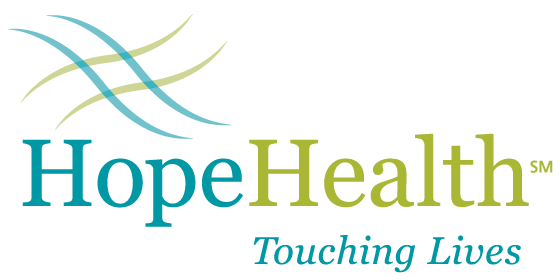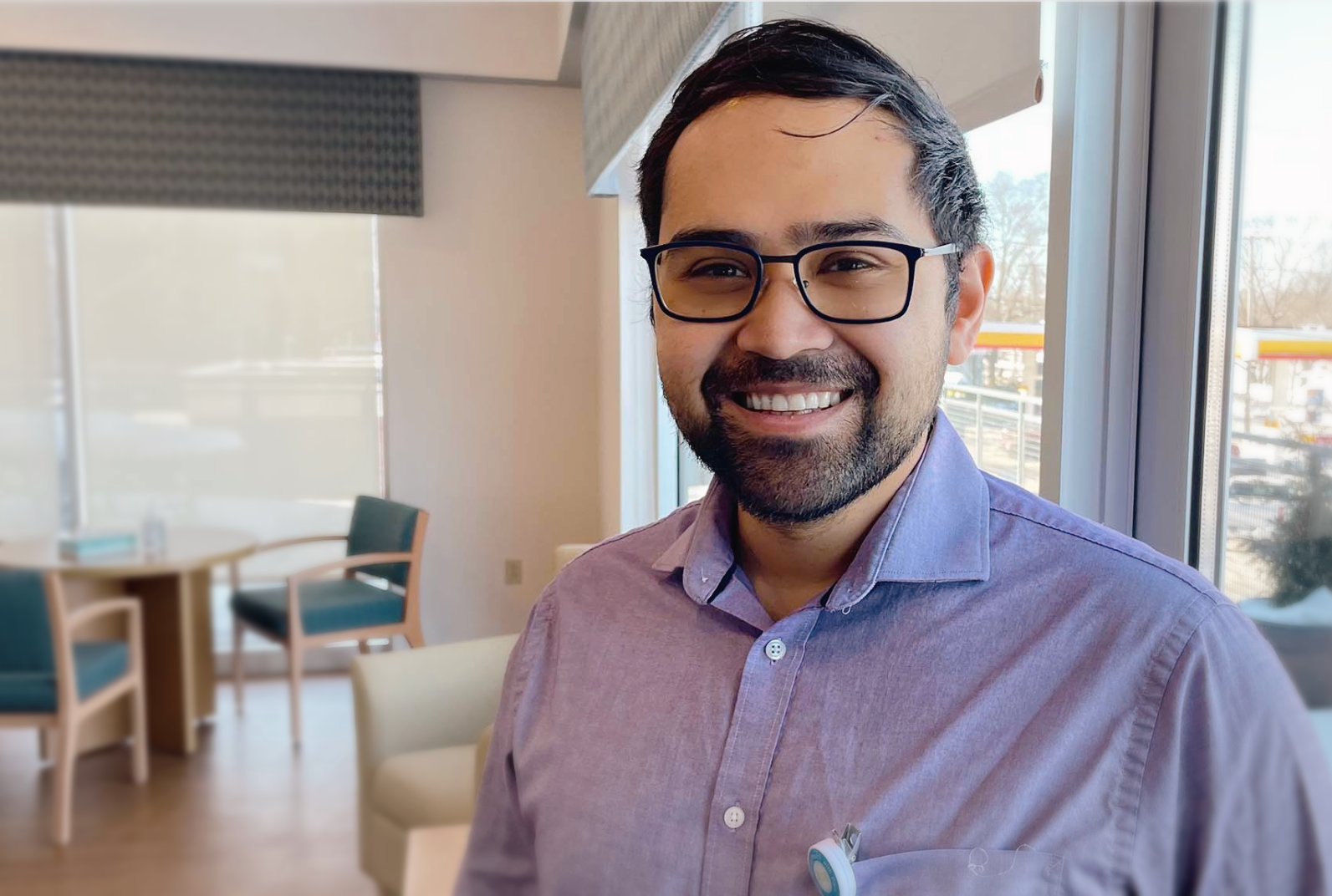In 2018, medical student Jacob Ramos walked through the doors of HopeHealth Hulitar Hospice Center for the first time, searching for his calling.
In 2022, he returned — as Jacob Ramos, MD, fresh off his residency, and intent on specializing in end-of-life care. He spent a year here in fellowship training, learning the unique skills of hospice care.
Today, as one of HopeHealth’s hospice doctors, Dr. Ramos is a fixture at the HopeHealth Hulitar Hospice Center, and in the community. In honor of Doctor’s Day, we’re proud to spotlight him.
> Learn how to get started with hospice care.
Medical students aren’t required to do a rotation in hospice. Why did you decide to?
Dr. Ramos: I actually started medical school thinking I was going to be a psychiatrist. But when I got to that rotation, I realized I’d been expecting something else. I moved toward internal medicine, and spent a lot of time in the ICU (intensive care unit).
I liked critical illness, but not critical care. I was drawn to bigger questions that no one else in the room was asking. Eventually, one of the attending physicians said to me, “Just do a palliative care or hospice rotation. You’re so clearly set up for it.”
So I spent my last month of medical school doing a hospice rotation with HopeHealth. I was blown away.
What struck you most during your introduction to hospice?
It was eye-opening. Up till then, I didn’t even know this kind of care existed. I didn’t understand how hospice and palliative care are different from one another. I hadn’t been exposed to any of that in my early training. Suddenly I find myself surrounded by this incredible team, doing work that feels deeply meaningful.
Then there were these eerie coincidences that — I don’t know how else to say it — were like the universe telling me this is what I’m supposed to be doing. Things happened that month that made it more than just a month to me.
For example, the year before, when I was just starting my hands-on training, I was working in a local primary care office. The staff encouraged me to spend time with a long-time patient, who was just delighted by the chance to talk. We had a really long, memorable conversation. Then, during my hospice rotation at HopeHealth, in my final month of medical school, I took care of him again — at the HopeHealth Hulitar Hospice Center, at the end of his life. He wasn’t responsive anymore, but recognizing him was a full-circle experience that cemented everything for me.
I left that rotation thinking, “This is what I want to do.”
> Read: “This work has changed me”: Q&A with HopeHealth’s chief medical officer
What should other aspiring doctors know about this field?
During my residency, the other people in our group wanted to go into cardiology, GI, infectious disease. I was always known as the guy that was going to do hospice care. I was very committed to that as my next level of training.
The reaction from my peers was often, “Why?” Hospice is a hard field for a lot of doctors. You know you’re not going to cure anything. Sometimes it’s tough, breaking with that idea of yourself as a doctor who can write a prescription to save somebody’s life.
But if hospice is a job you can do, it’s a privilege. You’re there at the end of a person’s life when they need and deserve the most care and attention. You get to really talk with patients and families, and you hear such amazing stories. Every patient has the ability to be that person who reminds you what love is.
What does your day-to-day look like at HopeHealth?
I have to say: Back when I did my rotation and fellowship at HopeHealth, I was just hoping I’d be lucky enough to work somewhere like this. Never in my wildest dreams did I imagine I would literally get to work here, surrounded by my mentors. It’s an honor.
I’m at the Hulitar Hospice Center every day, caring for patients who need inpatient care. I spend the rest of my time in the community: in patients’ homes, long-term care facilities, wherever they live.
All that face-to-face time with patients is very ingrained in HopeHealth’s culture. It’s also pretty unique to us. In many other places, nurse practitioners do all that, and the doctors sign off from a distance. There’s nothing wrong with that. But as the doctor, I really appreciate doing my own face-to-face visits. I love getting to see people in their own environment. When I get a call about a patient, I can visualize exactly who they are — their pets, their grandkids, the pictures on their walls.
> Related: Checklist: What to look for in a hospice provider
What makes a “good day” in this work?
Honestly? A good day for me involves a lot of humor. If I can make someone laugh in the midst of terminal illness, I know I’ve helped them.
By the time people need me, they’re often afraid of what my visit means. Much of my job is deconstructing those fears. I show them that I’m not there to turn their living room into a clinic, I’m there to care. I’m there to remove their symptoms, so they can reclaim what’s important to them and continue living their lives for as long as possible.
When I enter their home, I take off my shoes. I play with their dog. If there aren’t enough chairs for everyone, I sit on the floor — actually, I sit on the floor so much that the staff at the Hulitar Hospice Center bought me my own collapsible stool. It’s such a sweet gift.
The point is, I want patients to be comfortable and to know that I actually, genuinely care. When that happens, it’s a good day.

